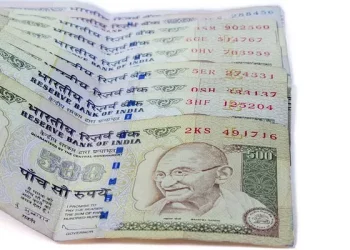The foreign exchange market is a complex and vibrant global marketplace where currency movements reflect intricate economic and geopolitical relationships. One recurring topic of interest is the interaction between Taiwan and China, particularly regarding Taiwan’s usage of the Chinese yuan (CNY). The unique political and economic ties between the two territories add an extra layer of intrigue to understanding Taiwan’s currency preferences. This article aims to unpack whether Taiwan is using the yuan, the extent of its role in Taiwan’s economy, and the implications of such a relationship on both domestic and international trading strategies.
1. Taiwan’s Currency: The New Taiwan Dollar (TWD)
To address the question of whether Taiwan uses the yuan, it is first essential to establish Taiwan’s official currency. The New Taiwan Dollar (TWD) is the primary medium of exchange in Taiwan, serving as the cornerstone of its economic activities. Governed by the Central Bank of the Republic of China (Taiwan), the TWD is used for all official transactions, local trade, and everyday commerce. It plays a crucial role in stabilizing Taiwan’s economy and reflecting its economic independence.
Taiwan’s economy, driven by high-tech manufacturing, trade, and services, has maintained a strong reliance on its own currency. The New Taiwan Dollar acts as a symbol of its sovereignty, as well as an instrument for monetary policy and economic control.
2. The Rise of the Yuan in the Global Arena
The Chinese yuan (CNY), particularly since China’s rapid ascent to economic prominence, has gained significant traction in global finance. As the world’s second-largest economy, China has pushed for the internationalization of its currency to match its economic influence. This push is exemplified by the yuan’s inclusion in the International Monetary Fund’s (IMF) Special Drawing Rights (SDR) basket in 2016, which marked a significant milestone in its global acceptance.
China’s Belt and Road Initiative (BRI) has further propelled the use of the yuan as many participating countries have increasingly conducted trade and investment in CNY. Moreover, cross-border transactions in yuan have been supported by swap agreements and direct settlements between China and its trade partners. These efforts showcase China’s ambitions to establish the yuan as a major global reserve currency.
3. Taiwan-China Relations and Their Economic Implications
Understanding Taiwan’s usage of the yuan requires examining the complex relationship between Taiwan and China. Politically, the relationship is marked by tension, as China considers Taiwan a part of its territory under the “One China” principle, while Taiwan maintains its own governance and political identity. Economically, however, the relationship is deeply intertwined, with China being Taiwan’s largest trading partner.
This economic interdependence has fostered bilateral trade valued at hundreds of billions of dollars annually. The trade relationship has grown robustly due to Taiwan’s exports of electronics, semiconductors, and other high-value products to China, which are integral to global supply chains.
4. The Role of the Yuan in Taiwan’s Trade and Finance
Given the trade volume between Taiwan and China, the use of the Chinese yuan in certain cross-border financial transactions has increased over time. Taiwan’s central bank and financial institutions facilitate the settlement of trade invoices in various currencies, including the U.S. dollar (USD) and CNY. The gradual shift towards using the yuan for trade settlement reflects practical considerations such as minimizing currency conversion risks and streamlining financial operations.
Trade Settlement in Yuan
Some Taiwanese businesses have adopted the yuan for trade settlements with their Chinese counterparts to reduce foreign exchange costs. When transactions are settled in CNY, companies avoid the bid-ask spreads and fees associated with multiple currency conversions, which can erode profit margins. This strategic use of the yuan aligns with the global trend where businesses seek cost efficiencies through direct currency use.
Yuan-Denominated Financial Products
Taiwan’s financial markets have gradually introduced yuan-denominated products. The banking sector in Taiwan has expanded its offerings to include yuan-based savings accounts, loans, and bonds. This has been facilitated by policies that support offshore yuan markets, allowing Taiwanese investors and corporations to access yuan liquidity without direct exposure to currency volatility in the mainland.
Despite these developments, the scale of yuan usage remains limited relative to the TWD and the U.S. dollar. The primary reason for this is the central bank’s emphasis on maintaining monetary stability through the TWD and the deep-rooted economic ties with the United States, which still positions the USD as the preferred currency for international trade and reserves.
5. Regulatory and Economic Considerations
Taiwan’s regulatory framework has shaped the extent to which the yuan is utilized within its economy. The Central Bank of Taiwan has historically adopted a cautious approach towards allowing significant yuan penetration in its domestic financial system. This caution stems from concerns over economic sovereignty and stability. By limiting excessive yuan influence, Taiwan’s policymakers aim to mitigate potential political leverage that could arise from over-dependence on Chinese financial instruments.
Moreover, the ongoing cross-strait political sensitivity ensures that financial policies related to currency use are aligned with maintaining Taiwan’s distinct economic identity. The integration of the yuan into Taiwan’s economy has therefore been managed carefully to balance trade benefits with national interests.
6. Yuan vs. TWD: Competitive Dynamics
The competitiveness between the TWD and the CNY extends beyond trade settlement into areas like investment, savings, and foreign exchange trading strategies. While yuan-based investments can attract interest due to potential higher yields tied to China’s economic growth, the TWD remains more stable and better supported by Taiwan’s well-managed monetary policies.
Impact on Forex Trading Strategies
For forex traders, understanding the dynamics between the TWD, CNY, and USD is essential. The currency pairs USD/TWD and USD/CNY are actively monitored as indicators of economic sentiment in East Asia. Trade wars, geopolitical tensions, and policy shifts in Beijing or Taipei can prompt traders to recalibrate their positions in these currencies.
Hedging Strategies
Given the close economic ties between Taiwan and China, forex traders often deploy hedging strategies that involve both TWD and CNY to protect against volatility driven by cross-strait developments. For instance, when political tensions escalate, traders might short CNY positions while holding TWD positions to mitigate potential downside risks.
7. The Influence of Global Economic Trends
Taiwan’s adoption of the yuan in certain contexts also reflects broader global trends. As China continues to push for the yuan’s internationalization, regional economies with strong trade links to China have gradually integrated yuan settlements. Taiwan’s approach, while cautious, aligns with similar movements seen in ASEAN countries, which have diversified their currency mix to include the yuan for regional trade.
However, it’s crucial to note that the dominance of the USD in global finance remains significant. Most of Taiwan’s foreign exchange reserves are still held in USD, underscoring the dollar’s unparalleled liquidity and trustworthiness as a reserve currency. This continued preference indicates that while the yuan is used in trade settlements, it has not displaced the dollar or the TWD in broader financial markets.
8. Potential Future Developments
Looking ahead, the extent to which Taiwan might increase its use of the yuan depends on a blend of economic, political, and strategic factors:
China’s Economic Policies: Should China offer more incentives or deepen financial cooperation with Taiwan, it could result in a gradual increase in yuan usage for trade and finance.
Geopolitical Stability: The political landscape will heavily influence Taiwan’s currency strategies. Peaceful cross-strait relations may encourage more economic collaboration, whereas tensions might stall or even reverse progress.
Global Currency Shifts: The yuan’s growing acceptance globally, bolstered by partnerships through initiatives like the BRI, may nudge Taiwan to adapt its currency practices over time.
Conclusion
The answer is nuanced. While Taiwan primarily uses the New Taiwan Dollar (TWD) as its official currency, the yuan does play a role in specific financial and trade contexts, particularly in cross-strait commerce. The yuan’s influence in Taiwan is growing but remains secondary to the TWD and USD due to regulatory caution, economic considerations, and the broader geopolitical environment.
For forex traders and financial analysts, keeping a close watch on the interaction between the TWD, CNY, and USD is essential. Currency shifts influenced by Taiwan-China relations can present both risks and opportunities for those in the foreign exchange market. Although the yuan’s role in Taiwan may evolve, the TWD continues to be the primary vehicle for maintaining economic stability and asserting Taiwan’s financial independence.
Related Topics:




























